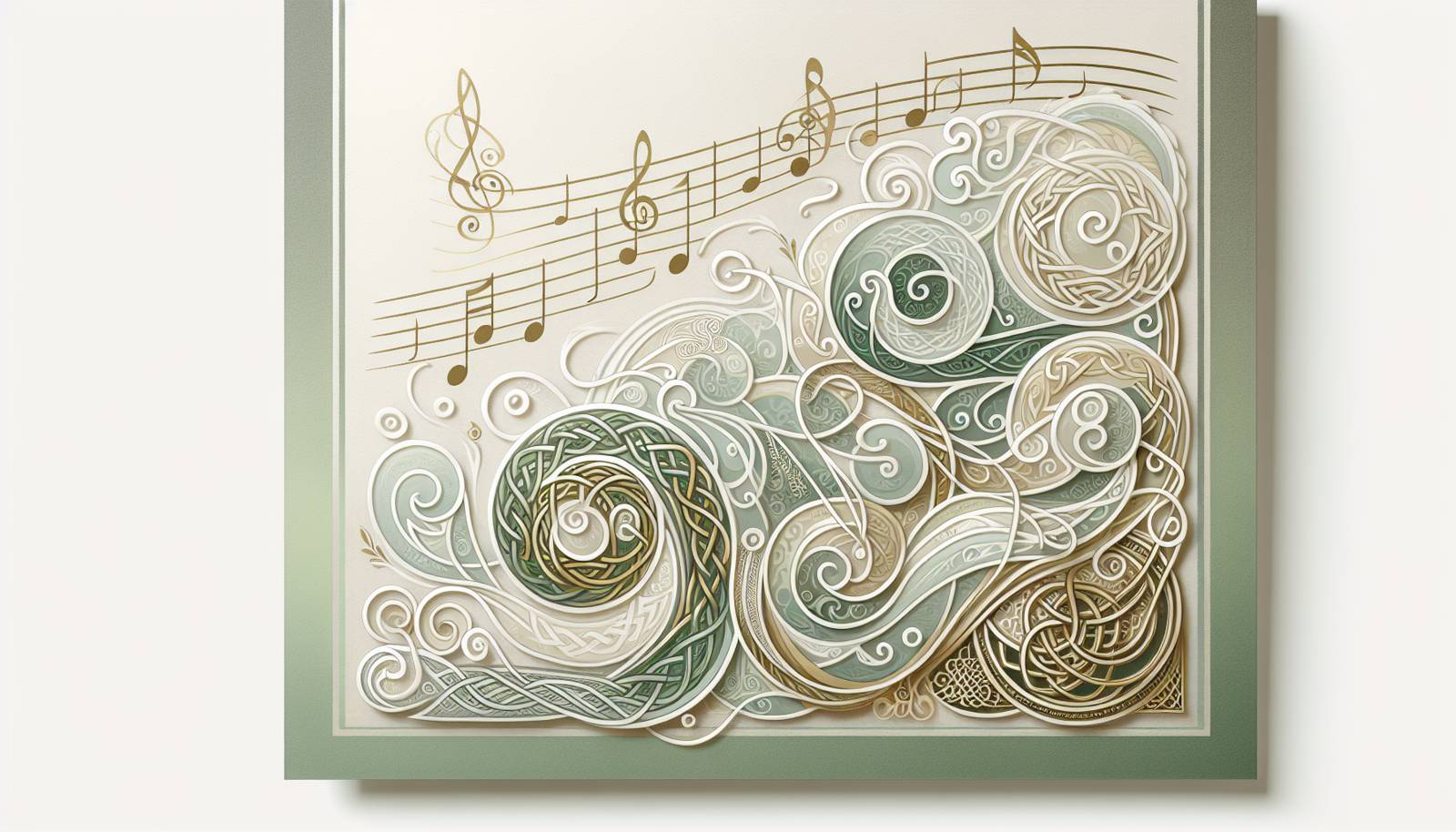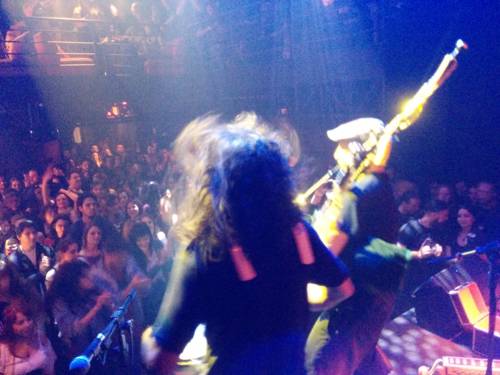
FAQ About The Influence of Celtic Folklore on Global Music

What is Celtic folklore?
Celtic folklore refers to the traditional myths, stories, and legends originating from the Celtic regions, notably Ireland, Scotland, Wales, Cornwall, the Isle of Man, and Brittany. It encompasses a rich tapestry of narratives involving mythical creatures, heroes, and ancient gods, often reflecting themes of nature, magic, and life’s spiritual elements.

How has Celtic folklore influenced global music?
Celtic folklore has influenced global music by providing inspiration for lyrics, stories, and melodies. Traditional Celtic instruments such as the harp, fiddle, and tin whistle have been incorporated into various music genres worldwide. Elements of Celtic mythology and storytelling are also found in the lyrical content of diverse musical forms, from rock to classical music.

Which musical instruments are commonly associated with Celtic folklore?
Musical instruments commonly associated with Celtic folklore include the harp, fiddle, bodhrán (a type of drum), tin whistle, bagpipes, and the flute. These instruments have traditionally been used to perform Celtic music, characterized by its distinct melodic and rhythmic structures.

Can you name some global music genres influenced by Celtic folklore?
Several global music genres have been influenced by Celtic folklore, including folk, rock, and new-age music. Artists from the Americana and country genres have also incorporated Celtic themes and instruments into their music, creating a fusion of sounds that reflect these age-old cultural stories.

What are some examples of songs that draw from Celtic folklore?
Examples of songs that draw from Celtic folklore include "The Mystic’s Dream" by Loreena McKennitt, "Ride On" by Christy Moore, and "Siúil a Rún," a traditional Irish song. These songs use themes, stories, or instruments from Celtic culture to enhance their lyrical and musical complexity.

What role does storytelling play in Celtic-influenced music?
Storytelling plays a central role in Celtic-influenced music, often reflecting the narrative nature of traditional Celtic folklore. Songs may recount myths, historical events, or personal tales, using metaphoric language and imagery that evoke the mystical and elemental themes of Celtic lore.

Why is the harp significant in Celtic music?
The harp is significant in Celtic music due to its historical and cultural importance. It is considered a national symbol in Ireland and has been used for centuries in various ceremonial and traditional music settings. The harp’s ethereal sound complements the mythical and poetic nature of Celtic folklore.

How do modern musicians incorporate Celtic folklore into their work?
Modern musicians incorporate Celtic folklore into their work by using traditional Celtic instruments, adapting folklore narratives into contemporary lyrics, and blending Celtic musical scales with modern genres. This fusion creates a unique sound that respects traditional elements while appealing to contemporary audiences.

What are some popular festivals that celebrate Celtic music and folklore?
Popular festivals that celebrate Celtic music and folklore include the Celtic Colours International Festival in Canada, the Festival Interceltique de Lorient in Brittany, and the Fleadh Cheoil music festival in Ireland. These events highlight traditional music, dance, and cultural performances.

Are there any famous artists known for using Celtic folklore in their music?
Famous artists known for using Celtic folklore in their music include Clannad, Enya, and The Chieftains. These artists have successfully blended traditional Celtic themes and instruments with contemporary musical styles, bringing the rich heritage of Celtic folklore to a global audience.

What myths or tales from Celtic folklore are commonly reflected in music?
Myths or tales from Celtic folklore commonly reflected in music include the tales of Cú Chulainn, the Children of Lir, and the Mabinogion. These stories, filled with heroic feats, magical transformations, and divine interactions, offer rich narrative material for musical interpretation.

Can Celtic folklore themes be found in classical music?
Yes, Celtic folklore themes can be found in classical music. Composers like Ralph Vaughan Williams and Arnold Bax have incorporated Celtic elements into their works, drawing on traditional melodies and folklore to create compositions that echo the cultural and mythical past of the Celtic regions.

How do Celtic music and folklore impact cultural expression today?
Celtic music and folklore impact cultural expression today by providing a sense of identity and heritage. They influence contemporary art forms, including music, literature, and dance, allowing cultural traditions to evolve while maintaining connections to the past. This influence is visible in both native Celtic regions and among global audiences interested in this rich cultural legacy.

What is the bodhrán, and what role does it play in Celtic music?
The bodhrán is a traditional Irish frame drum that plays a crucial role in Celtic music. It provides rhythm and depth to musical compositions, supporting the melodies of stringed and wind instruments. Bodhráns are typically played with a stick called a tipper, which allows for various rhythmic patterns.

How does Celtic folklore appear in film or television music?
Celtic folklore appears in film and television music through soundtracks that incorporate traditional instruments and motifs. Films like "Braveheart" and "The Lord of the Rings" series use pieces inspired by Celtic music to enhance their storytelling by providing an emotional and historical context through sound.

Is there a difference between Celtic music and Irish music?
Yes, there is a difference between Celtic music and Irish music. Although Irish music is a subset of Celtic music, the latter encompasses traditional music from all Celtic regions, including Scotland, Wales, Brittany, and others. Irish music specifically refers to the traditional and modern musical practices found in Ireland.

What influence did Celtic mythology have on medieval music?
Celtic mythology influenced medieval music through the transmission of oral traditions and narrative songs that depicted legendary tales and historical events. While the specific impact on medieval compositions might not be directly documented, the folklore’s themes often inspired the artistic works of the medieval period.

Can Celtic folklore influence non-musical creative fields?
Yes, Celtic folklore can influence non-musical creative fields such as literature, art, theater, and film. Its rich storytelling, mythical creatures, and legendary heroes provide ample inspiration for narratives, visual symbols, and artistic motifs, reflecting and preserving Celtic cultural heritage across various platforms.

How do historical events in Celtic regions appear in music?
Historical events in Celtic regions appear in music through folk songs and ballads that recount significant happenings like battles, migrations, and cultural shifts. These songs serve as historical records, preserving the collective memory and sentiments of people during those times, enhancing both the historical and emotional connection to these events.

Are there any misconceptions about Celtic music in the context of folklore?
One misconception about Celtic music is that it is monolithic and only traditional. In reality, Celtic music is diverse, encompassing a wide range of styles and adaptations that can appeal to various audiences. While it draws heavily upon folklore, it evolves continually, integrating modern influences while maintaining its cultural roots.
